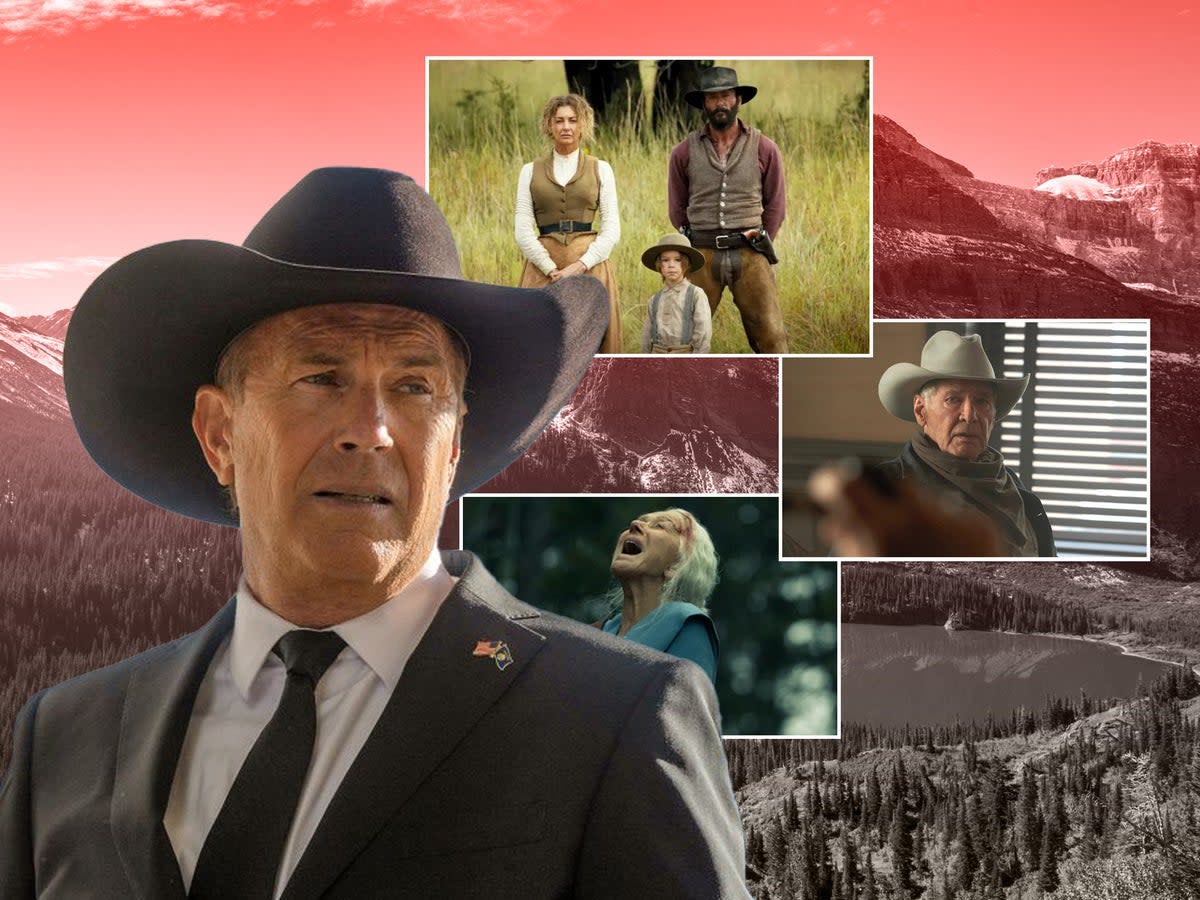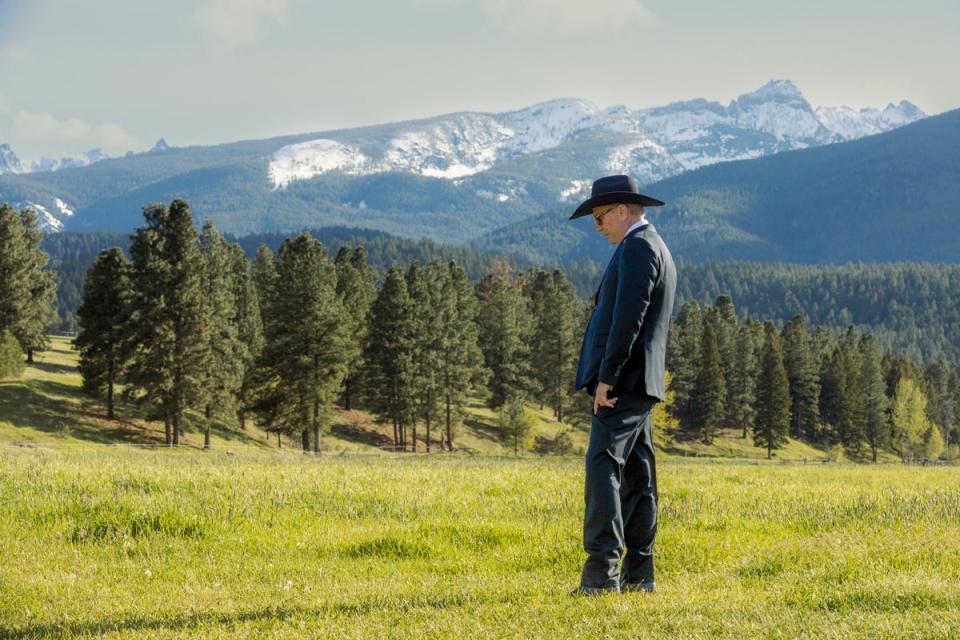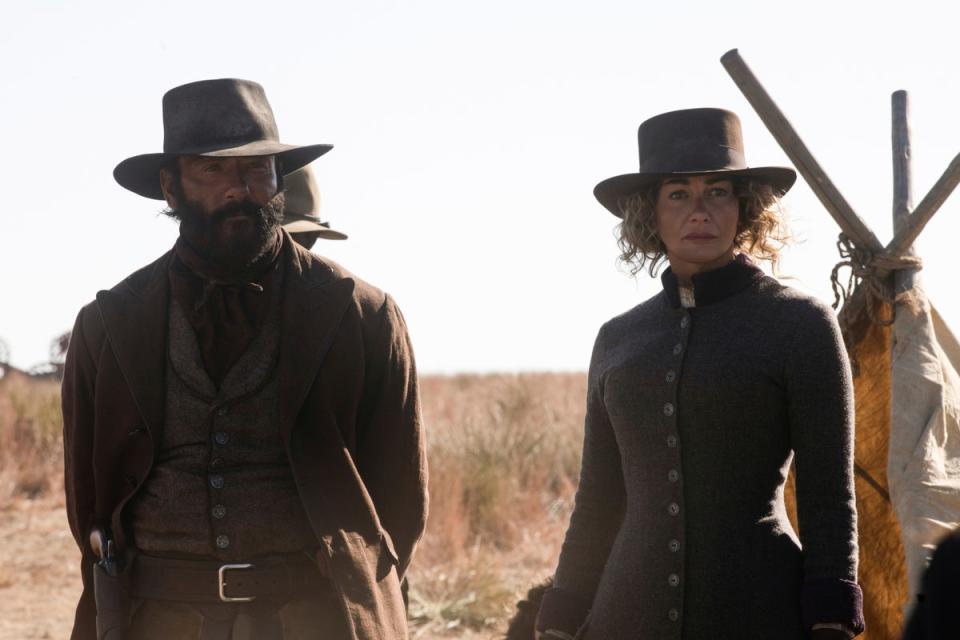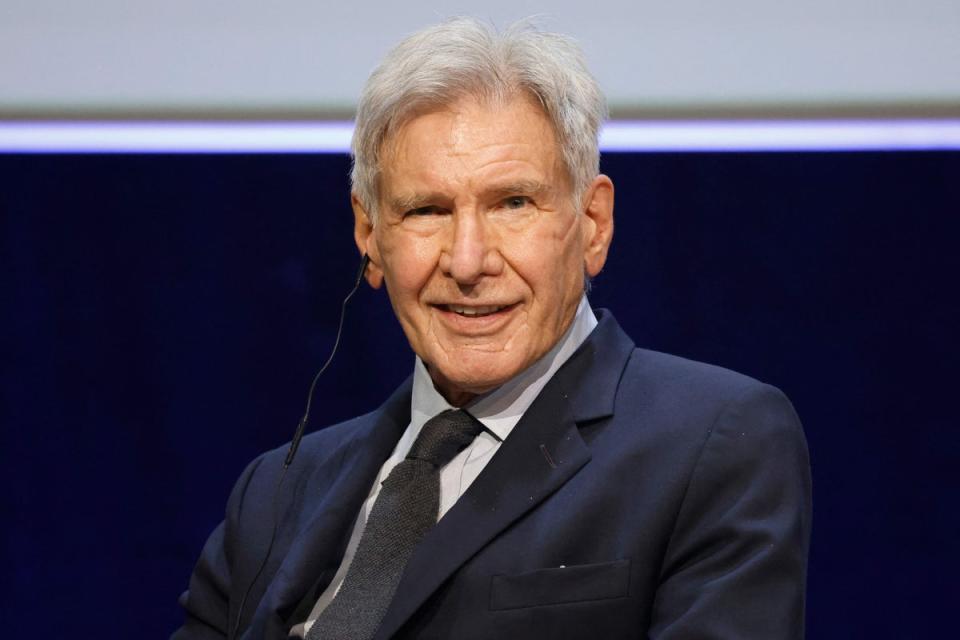Everything about the Yellowstone franchise is sensational - especially its real-world impact in Montana

- Oops!Something went wrong.Please try again later.
- Oops!Something went wrong.Please try again later.
As residents of Butte headed to vote in person last month, they skipped the usual polling location of Butte-Silver Bow Civic Center and instead walked through the doors of another building most locals had frequented for years -- albeit for an entirely different purpose.
They were casting their ballots in a now-closed Herberger’s, the department store which shuttered in 2018 in the Butte Plaza Mall. The mall, like most of its contemporaries, stands as a limping shell of its former self. It’s about a mile and a half from the civic center, where the nearly 30,000-square-foot space was otherwise occupied with a production stage, cast and crew for the latest spinoff of the wildly popular Yellowstone franchise.
As more traditional industries – like in-person retail – are struggling amidst changing technology and post-pandemic life, film has emerged as a new, growing option for many Montana communities. The financial impact of Yellowstone and its subsequent spinoffs 1883 and soon-to-debut 1923 cannot be overstated as the franchise creates ripple effects through the economy across the state.
Of course, there’s been some pushback: Residents complaining about traffic as crews film, Montana locals panicking about spiraling house prices that make it nearly impossible for them to stay. But that real estate pattern has been replicated in picturesque rural markets across the country, beginning before Yellowstone’s 2018 premiere and accelerating during the pandemic. It’s hardly likely that so many wealthy fans of the Kevin Costner series decamped to Montana that they single-handedly upset the local housing equilibrium.

The show, meanwhile, has been pumping millions into the state. Yellowstone brought in more than $70 million in additional spending from the filming of a single season alone, according to an April report from the University of Montana Bureau of Business and Economic Research. The report, which was sponsored by the MEDIA Coalition of Montana and Paramount, focused on the filming of Yellowstone Season 4 from fall 2020 to spring 2021.
That included 527 permanent jobs, $25.3million in annual personal income for Montana households and $85.8million in additional gross receipts for Montana businesses and non-business organisations, according to the study.
Yellowstone, the fifth season of which debuted on 13 November with a record-breaking audience of 12.1million viewers, actually originally filmed in Utah but later moved to Montana, where the plot is set, for better tax incentives.
Created by Texan actor and screenwriter Taylor Sheridan, the Western drama focuses on the ranching Dutton family, led by Kevin Costner’s John Dutton, as they battle to preserve their legacy, property and the Montanan wilderness (engaging in plenty of gun fights, boardroom battles and family intrigue along the way.)
The show’s runaway success birthed 1883, a prequel starring Tim McGraw and Faith Hill, which debuted last year, and now 1923, starring Harrison Ford and Helen Mirren, which premieres on Sunday.
Maria Pochervina has been involved from almost the very beginning; the director of Butte-Silver Bow Convention and Visitors Bureau took scouts on a trip in 2018 around the area, though locations didn’t fit the show’s needs at the time. Now, Butte-filmed scenes are starring in 1923.
“People in our community, they’re making some money, they’re renting stuff ... it’s been kind of a dream come true,” Ms Pochervina, whose job now includes placing crew in hotels and houses as well as directing tourists to filming locations, tells The Independent.
The majority of visitors are looking for Chief Joseph Ranch, more than two hours from Butte; the real-life working ranch is the filming location for the Dutton residence and its sprawling vistas in Yellowstone. But Ms Pochervina, after probing each tourist’s knowledge of the show to prevent spoilers, can suggest a litany of additional famed sites they’ll remember all over the state.
One business easily recognisable to viewers is located an hour and 40 minutes northwest in Missoula. Ruby’s Cafe was the stand-in for the local diner in Yellowstone as well as the filming location for another famed shoutout in the series (we’re avoiding specifics here to prevent spoilers!).

“We’ve become a destination for people that come through Missoula that are Yellowstone fans,” owner Brenda Hallas tells The Independent, adding her amazement that Ruby’s seems to be on many fans’ “bucket lists.”
The staff fields questions about the show nonstop. Ms Hallas even began selling swag onsite for the first time and watched it fly off the shelves, much to her surprise.
“I cannot believe the amount of T-shirts we’re selling,” she says, in addition to the “hats and the postcards and the stickers and all that kind of stuff. I’m blown away ... I’m not somebody who goes somewhere and buys a t-shirt at a restaurant that has their logo on it. That’s not me, right? That is a lot of people. A lot of people do.”
Ms Hallas also liked the uniforms Yellowstone’s costume department created for waitresses at the fictional diner, so she decided to put her own staff in uniforms, too. She even modelled them after the styles on the show.
When filming took place at Ruby’s in October 2020, Ms Hallas witnessed firsthand the knock-on benefits of production locally. For the shootout scene, the eatery’s tinted windows were removed and replaced with clear ones that would later be broken.
“They used a local glass company to do that,” Ms Hallas says. “They used a local cleaning company to come and clean our facility when they were done. So they use a lot of people ... they’re not hiring people out of state to come in and do the work, which is wonderful.”
Lynn-Wood Fields, also of Missoula, has been able to start two new businesses because of Yellowstone, she tells The Independent.
“The ripple effect ... is more than just the jobs they’ve directly given millions to but people like me – who saw kind of a gap between productions and knowing who to hire in the state, because they’re obviously incentivized to hire locally, but they didn’t know who was able to do that, if they were good at it ... so I created a media training centre.”
She says: “I have a database that connects productions to train filmmakers in the state. And I’ve probably helped 100 people get jobs this year. But then I also have partnered with Accelerate Montana, which does rapid training in all spheres, like manufacturing, tech, healthcare, in the state. I convinced them to add film and media, and we are are launching rapid training courses to get people what we call ‘film-set ready’ ... 1923 came to my classroom and hired out of the classroom.”
Ms Fields, who grew up in Montana, mentions another friend and Yellowstone superfan who found work as an extra for the franchise.

“Her husband is a firefighter, and he occasionally is a medic for film crews,” she says. “He makes a little bit of side money, and they make ... a really nice supplemental income. But also people have great stories and have a really good time being extras.”
The UMT study reported that Yellowstone employed 624 extras in Montana during Season 4 filming.
Ms Fields says there’s also been “an untick of crew [that] is indigenous and veterans, who are incredibly good on the job.
“They are so good at film,” she says. “Indigenous people already have this innate storytelling in the culture, so they just kind of fit right in and [are] community-based. And veterans are already kind of mission-based.”
Montana Film Commissioner Allison Whitmer noted in an interview with The Independent that the Yellowstone team is “not afraid to shy away from uncomfortable topics and topics like missing and murdered indigenous women, and how the struggle over land rights and recognition is happening and has happened, and law enforcement issues and how things work between Indian country and the federal government.
“Those are things that your average person in the country doesn’t know about,” she says, adding: “Now millions of people have been able to learn a little bit about totally different political groups, and how those things operate in a fictional sense than they ever knew before. The educational part of the show and just those teeny pieces is, I think, really valuable to the general public.”
She believes the success of Yellowstone has been the result of a concerted effort; film advocates within the state for years banked on landing a major and long-running show.
“I was hoping it would be something like Six Feet Under, a cable television series that people watch for years,” she says.
Instead, she was pleasantly stunned to watch the Yellowstone franchise become a television juggernaut.
”It’s an incredible cultural phenomenon. It showcases this incredible scenery in Montana. It has very interesting plot points,” she says, though she’s clear on wanting to remind the public that the show is fiction.
There’s a sizeable portion of Montana grumbling that the show doesn’t depict real life in the state, but, let’s remember: It’s television, and highly-dramatised TV at that.
“It’s tangentially related to the real world of Montana,” says Ms Whitmer, another native of the state.
The Yellowstone powerhouse shows no signs of slowing down, as 1923 takes to the airwaves with its megastar leads. The UMT economic report, while focusing on a single production of a single season, noted the study’s potential to forecast, on a wider scale, what an expanding film industry can do for Montana; it did not take into account 1883 or 1923, both productions filming and employing across the state.
What both viewers, producers and grumbling natives can agree on is that the franchise makes Montana look incredible. If it makes it richer, too, even better.
“My father would always say, ‘If you live in Montana, you’re obligated to be a service to Montana,’” Ms Fields, who considers herself a “film advocate for Montana,” tells The Independent. “And I think a lot of us who are from here really feel that way.”

